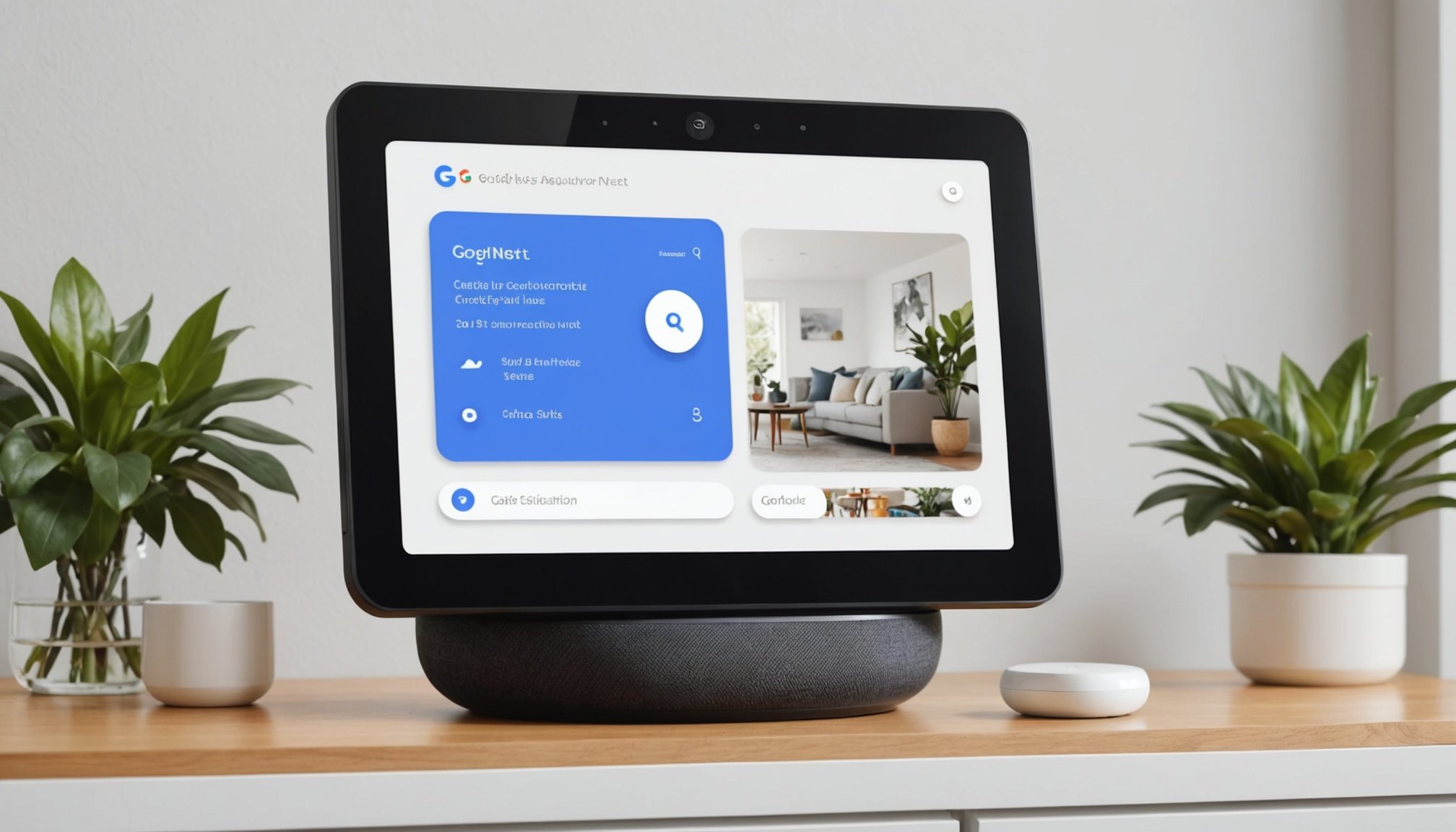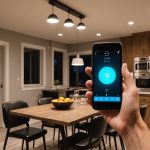Creating a Safe and Streamlined Home Automation System with Your Google Nest Hub
In the era of smart homes, the Google Nest Hub has emerged as a powerful central command center that can transform your living space into a seamless, automated, and secure environment. Here’s a comprehensive guide on how to create a safe and streamlined home automation system using your Google Nest Hub.
Understanding the Core of Home Automation
At the heart of any smart home is the automation system, which integrates and coordinates all the various smart devices and technologies. The Google Nest Hub acts as this central hub, connecting and communicating with all your smart devices, from lighting and climate control to security and entertainment systems.
In the same genre : Ultimate Guide to Perfectly Optimizing Your Intel NUC for Seamless 4K Streaming with Kodi
Key Features of the Google Nest Hub
- Voice and Touch Control: The Google Nest Hub allows you to manage your home using either voice commands through Google Assistant or touch controls on the screen. This versatility makes it easy for everyone in your home to use the system.
- Multi-Home Management: You can manage up to five homes per Google account, making it ideal for families with multiple residences or for those who need to oversee different properties.
- Family Group Sharing: The Nest Hub supports family group sharing, allowing up to six members to have different access levels to control various aspects of your smart home.
Ensuring Home Security with Smart Devices
Home security is a critical aspect of any smart home setup. Here’s how you can enhance your home’s security using your Google Nest Hub and other smart devices.
Automated Security Systems
- Smart Locks and Surveillance Cameras: Integrating smart locks and surveillance cameras into your system can provide an additional layer of security. For example, the Nest Doorbell with facial recognition can identify people approaching your door and automatically unlock the door or disarm the security system for trusted individuals.
- Real-Time Alerts: Systems like ADT and SimpliSafe offer real-time alerts and video verification, which can significantly enhance response times during security breaches. These systems can send alerts to your phone or through the Google Home app, ensuring you are always informed.
Security Considerations
While smart home devices offer numerous benefits, they also come with security and privacy concerns.
Also read : Ultimate Guide to Building a High-Performance 3D Rendering Workstation with AMD Threadripper 3960X
- Data Privacy: Smart home devices collect and process personal data, which can be vulnerable to data breaches or misuse. It’s essential to review the privacy policies of your devices and services, understand how your data is being used, and take steps to protect it. Google Nest devices, for instance, follow strict data protection policies and allow you to clear your interaction history easily.
- Cybersecurity: Ensure that your smart home devices are secure by using strong passwords, enabling two-factor authentication, and keeping your devices and software up-to-date. Google requires partners to enable secondary user verification for operations that could compromise security, such as unlocking doors or disabling security systems.
Setting Up Your Smart Home Devices
Setting up your smart home devices with the Google Nest Hub is relatively straightforward but requires some planning to ensure a seamless experience.
Connecting Your Devices
- Google Home App: Use the Google Home app to connect and manage all your smart devices. This app allows you to set up routines, scenes, and custom controls that cater to your specific needs and preferences.
- Persistent Connections: Ensure that your smart devices maintain persistent connections for cloud control. This is crucial for devices that need to be controlled remotely, such as lights, thermostats, and security cameras.
Example Setup
Here’s an example of how you might set up your smart home using the Google Nest Hub:
- Morning Routine: Create a routine that turns on the lights, adjusts the thermostat, and starts your favorite music when you wake up.
- Leaving Home: Set up a scene that locks all doors, turns off lights, and adjusts the thermostat when you leave the house.
- Evening Routine: Create a routine that dims the lights, adjusts the thermostat, and plays soothing music when you are ready to sleep.
Practical Tips for Streamlining Your Smart Home
To ensure your smart home is both safe and streamlined, here are some practical tips:
Use Strong Passwords and Two-Factor Authentication
- Always use strong, unique passwords for each of your smart devices and enable two-factor authentication to add an extra layer of security.
Regularly Update Your Devices
- Keep your smart devices and their software up-to-date to protect against vulnerabilities and ensure you have the latest security patches.
Be Mindful of Data Sharing
- Be cautious about the data you share with your smart home devices and services. Review privacy policies and adjust settings to limit data collection and sharing.
Use Additional Security Measures
- Consider investing in additional security measures like firewalls or virtual private networks (VPNs) to further protect your smart home network.
Comparative Analysis of Popular Home Security Systems
Here’s a comparative analysis of some popular home security systems that integrate well with the Google Nest Hub:
| System | Key Features | Cost | Integration with Google Nest |
|---|---|---|---|
| ADT | Advanced monitoring facilities, SMART text-based communication, facial recognition with Nest Doorbell | $29.99 – $44.99/month | Integrates with Nest Doorbell and other Nest devices |
| SimpliSafe | DIY setup, live video and two-way audio, customizable entry delay | $19.99 – $29.99/month | Works with Alexa and Google Assistant for home automation |
| Cove | Smash-and-grab protection, separate hub and keypad, easy DIY setup | $29.99/month | Integrates with Google Assistant for voice control |
Ensuring Quality and Performance
Maintaining high performance and reliability is crucial for a seamless smart home experience.
Performance Metrics
- Google provides metrics on the usage and performance of your integrations through the Google Cloud Platform project page. This helps you monitor and improve the performance of your smart home devices.
Quality Expectations
- Ensure that your devices meet Google’s quality expectations, including latency, reliability, and accurate state reporting. Failure to meet these expectations could result in reduced visibility or even the disabling of your integration.
Creating a safe and streamlined home automation system with your Google Nest Hub involves careful planning, attention to security and privacy, and regular maintenance. By following these strategies, you can enjoy the convenience and peace of mind that smart home technology offers.
Final Tips
- Stay Informed: Keep up-to-date with the latest security updates and best practices for smart home devices.
- Customize Your Setup: Tailor your smart home setup to your specific needs and preferences.
- Monitor Performance: Regularly check the performance metrics of your devices to ensure they are working optimally.
With the Google Nest Hub at the center of your smart home, you can create a secure, efficient, and highly personalized living environment that enhances your daily life.











